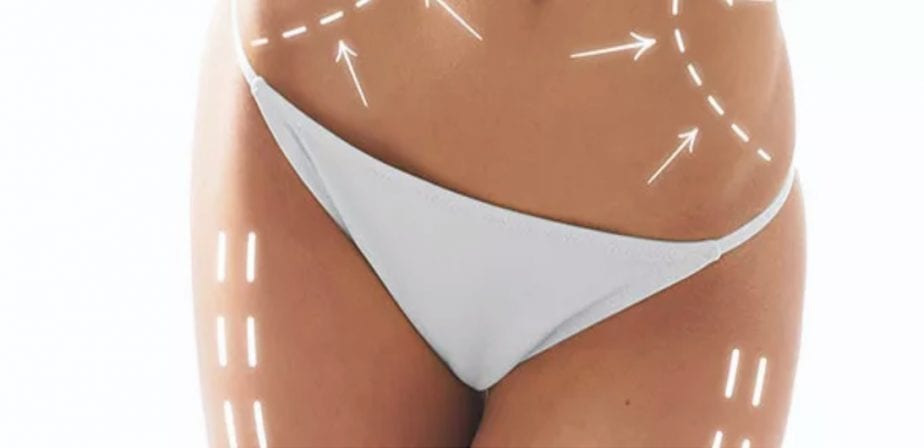One of the most popular and frequently performed cosmetic surgery procedures done around the world is liposuction. It is an invasive yet minimally scarring procedure that improves body contour by removing fat cells between the skin and underlying muscles.
If you’re considering liposuction, here are some things you may want to know about this surgical procedure.
Not Intended for Weight Loss
Although liposuction is often thought of as a weight-loss solution, it’s not meant to treat that problem. Liposuction can be used to kick-start a weight-loss program, but patients shouldn’t expect to lose more than five to ten pounds.

Liposuction Locations
Liposuction is intended to improve body shape by decreasing isolated collections of body fat that don’t respond to diet and exercise. The most common treatment locations include the abs, love handles, thighs, arms, back, and under the chin.
Considering the Options
People close to their ideal weight but still have unwanted fat bulges are the best candidates for liposuction. While liposuction can improve a body’s shape at any weight and there are no definitive restrictions for those who can and can’t undergo liposuction, people with a BMI over 30 are typically not good candidates for the procedure.
Another thing that’s important to consider is your skin’s elasticity. It’s generally younger non-smokers with minimal sun damage and darker skin tones with the best skin elasticity. As we age, our skin loses its ability to bounce back after being stretched. Older patients or those removing a large amount of fat could be left with sagging skin after having liposuction. A board-certified plastic surgeon will help you to determine if liposuction is a good option for you.
How Liposuction Works
Most liposuction procedures use a tumescent technique to minimize bruising and blood loss. In this technique, a large amount of local anesthesia containing lidocaine and epinephrine is injected into the fat beneath the skin. This causes the targeted area to become tumescent, that is, swollen and firm.
Next, the surgeon inserts thin metallic tubes called cannulas into the body through tiny incisions in the skin and uses them to make controlled motions to displace the fat, which is then suctioned out with a surgical vacuum syringe.
If only small areas are being done, the surgery is often performed using local anesthesia. Larger areas are typically done under IV sedation or general anesthesia.
Unless a large amount of fat is being removed, the procedure rarely requires an overnight stay at the hospital.
Combining Procedures
Often, liposuction is combined with other procedures, such as a tummy tuck, a cosmetic surgery procedure used to make the abdomen thinner and firmer.
The removed fat can be purified and moved to other parts of the body to create the desired body shape, increasing the volume in areas such as cheeks, lips, breasts, and butt. Fat transfer can also help reduce the look of pitted acne scars.
Length of Surgery
While the actual surgery may only require 2 to 3 hours, the average patient will be in the surgical facility for 3 to 7 hours. The patient’s size, the number of areas being treated, and the type of anesthesia used contribute to the length of time it takes to complete liposuction.
Recovery Time
When liposuction is an outpatient procedure, recovery is usually quick under most circumstances. You should be able to return to work within a few days and to normal activities within about two weeks. Expect bruising, swelling, and soreness for a least a few weeks. The most intense pain usually happens 2 to 4 days after surgery and then decreases steadily. Tenderness and soreness are typically bothersome for up to 4 weeks but will subside over the following 4 to 8 weeks.
Pain and swelling after liposuction will be gone in the first 3 weeks of your recovery period, and the majority of it will be gone in about three months. Small amounts of swelling may continue for up to a year following surgery.
Recovery Tips
To ensure that you heal properly and minimize your risk of complications, it’s important to pay attention to your doctor’s post-op instructions and ask any questions you may have. You’ll need at least a few days of rest, so make sure you schedule enough time to do that. You can usually return to work or school after a few days.
Your doctor will apply bandages and possibly compression garments. Wearing them can help maintain pressure on the area, stop bleeding, and keep the shape achieved during surgery.
To reduce the risk of infection after surgery, your doctor may prescribe antibiotics. Prescription or over-the-counter painkillers can ease pain, numbness, and swelling. It’s normal to feel numbness and tingling, as well as pain for a few weeks after surgery.
As soon as you are able, it’s important to start moving at a slow pace. Walking will help to prevent blood clots from forming in your legs and help you to heal more quickly. Only return to more strenuous activity after a month has passed.
If your surgical incision has stitches, it’s normal for it to be leaky for a few days. Keep the area covered according to your doctor’s instructions. You can shower after 48 hours but should avoid soaking in a tub until the stitches come out.
Book an appointment today for a liposuction consultation. Call us at 416-962-4444.



